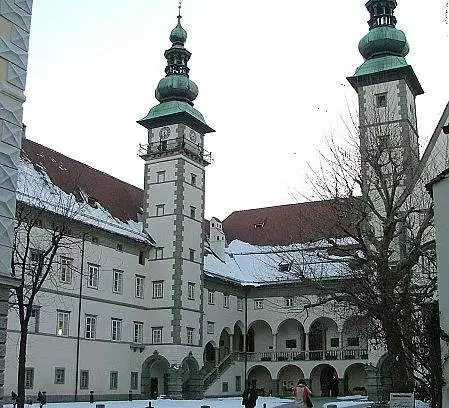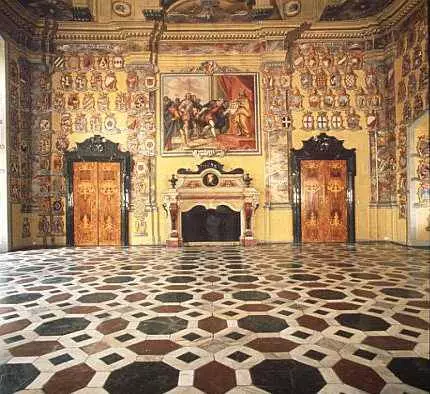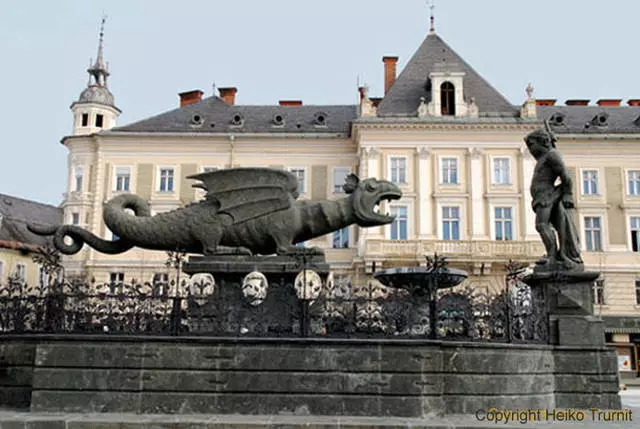City with a strange title on the lake.
The city of Klagenfurt on Wörthersee in Carinthia on Austrian concept is quite a large city, it has about 100 thousand inhabitants and this is the sixth largest city in the country! The city has a Slovenian minority and the Slovenian name of the sorcement. Patto there is schools and with the Slovenian language, the city is considered the cultural center of the Carint Slovenians.
In German, the word Klagenfurt sounds ridiculous (Klagen-complaining, Furt - Brod, place), but it comes from the distortion of Romanesque L'Aquiliu, that is, a place on the water. The city is quite old, located in the center of the Klagenfurt Wpadin, and Lake Verceree is considered the warmest of the Alpine lakes. For Austria, it's cold enough in winter and hot enough in summer
View of the lake in the direction of the city

Why go to Klagenfurt?
This is a very simple question. Just resting on the shore of the lake, go only in the summer, only in a good company or with children, look at the town with a pleasant architecture and enjoy nature and peace. And all the rest can be viewed in one day, well, the maximum for two, if you are a big lover of museums and architecture ...
History of the city
Roman settlement and Slavs.Excavations on the place of Klagenfurt say that there were Romanesque settlements and the Roman villa was found (the territories relate to the province of Nordic), and after the great resettlement of peoples - Slavic. Then these lands were included in the Reich and in the 11th century there were built a lot of monasteries, especially a lot of the Order of Cistorians (the Russian name of Bernardines) and the dynasty of Schphanhaimov was approved. The first written mention of Klagenfurt 1192/99 and is associated with the monastry chronicles of the monastery of Sant Paul. In the 1252 city received urban law. It is expected that there was a fortress on the place of Landhaus.
Fire that went not to benefit.
But in history, the city will enter into the time of reformation in the 16th century with the famous Maximmilian I Bavarian (the authors of the covenant of the purity of beer). In 1514 g, the city completely burned down. Maximillian handed over to the city of citizens of the city. Therefore, it is by this time that all its notable monuments include Landhaz and the Cathedral. The city plan made Domenico Del Allyo, then the channel was breaking to the lake. And as a result, a residence and a mint was moved here. So the city became the center of Carinthia.
Fight for faith, the city loses importance.
During the Reformation, the majority of the population passed into the Lutheran faith and the city took a lot of Lutheran Refugees, and a prayer house was arranged in the capture. In 1595, the remaining Catholics of Gabbssburg set the city before choosing: or leave him or return to Catholicism. From 1600, Jesuits appeared in the city, monasteries (Franciscans, Capuchins) were started again. When Jesuit was dissolved in 1773, their property was transferred to the bishop.
At the time of the Emperratius Mary Teresiai, the city again began to lose his meaning and with her son Joseph II, ins, the Grave was administratively satisfied with the entire Karinty. Then urban walls were blown up with Napoleon, but the outline of the old city is clearly visible today. The city included his surroundings.
From industrialization to this day.
Then, during the time of industrial growth, the railway and the city began to come to life. Then the Euargelical, that is, the Lutheran Church began to build here the temples - Johanherkirche (1863-66), and other significant buildings appeared: the land museum of Carinthia (1884), the new anniversary city theater (in honor of the 60th anniversary of the Board of Emperor Franz Joseph), school buildings (Characteristic buildings of bricks). In 1885, an exhibition was held on which 100 thousand people came and this was the first Coachenentfkrt exhibition. In 1911, a tram appeared here, instead of a horse.
But the first world war began and the battles held in the mountains between Austria-Hungary and Italy, called the mountain war, which went to the Alps made Klagenfurt by a front-line city with a lot of military hospitals. After the war, in 1920, the Plebisitis and the population decided to stay as part of Austria in 1920 on Carinthia belonging to Austria. Then he began the decline, the location of the world war, a difficult relationship with the Svokayan population, the Genocide of Carint Jews and a new defeat. Until 1055, there was an English occupation zone. English War Cemetery Rounded on Liliental Straße. In 1961, they began to build altars and the city acquired its current species.
Where to go to the Klagenfurt tourist what to see where to walk.
Theater and museums.
Theater is serious here, but if you do not understand German, it is hardly interesting.
Museums here too. In the gallery, the Museum of the Mining Museum is located in the mountain. During the war there was a bomb shelter. Museums and art galleries are even three here. The most significant and largest in Carinthia is the Rudolfima Land Museum. He is known and the Orgomny Library and besides the museum, the scientific institute is huge in Austrian standards. It has meetings on archeology, botanic, mineralogy, zoology, history ...
The city gallery of the Klagenfurt, opened in 1996 has a good collection of classic modern: Climt, Kokoska Shile, Morandi, and the like. The Museum of Modern Art Carinthia demonstrates artists of the 20-21th century and there are usually simply replaceable expositions.
Architecture and parks.
The easiest way to see the city on the sightseeing tours. This is the fact that we have already been listed: the Klagentfur Cathedral, the Cathedral Church of Diocesee Gurk, the city parish church of St. Aegis. In the West of the city there is an interesting church of the Holy Spirit. Former monastery is used by the Foundation SV. Viting. Of the former rural churches are interesting in the east of the city in Lendorf Romance Church of St. Peter and its frescoes - Typical Dynasty of the Caroling Dynasty Motley Mosaics from Stone. They are called "Lombard mosaics, it is about 900 year.
Of the civil facilities are interesting primarily Landhaz. There and today Landtag Carinthia is still sitting. On two central squares: the new area and the old area are called longness of the new and old town hall, both buildings were built in the 17th century. The old town hall is also called the Palace of Romini Rosenyergov (the ancient Austrian genus).
New Town Hall and Old Town Hall, Stroy Town Hall Hall



In the city about 20 locks, but almost all of them are in private ownership. The most famous castle of Maria Lorettto on the lake shore.
The most famous Fountain Fountain of the Dragon (Lindwurbrunnen) fountain is the most famous. An ancient legend says that in the surrounding swamps there was a dragon that was fed by people. And then people built a tower, and on her top tied the scarecrowed with meat with a chain with hooks inside. And only when the Dragon swallowed the bull - he was able to kill him. The dragon and chain are in the Heraldry of the city and therefore its attraction. Built the fountain in 1583 an unknown master, this is an allegory with Hercules. But the Head of the Dragon repeats the rhino skull, found in the surrounding area. And a fountain made of a solid piece of stone from the surrounding mountains. Fountain style - transitional era between Renaissance and Baroque, called mannerism.
Bernard von Schphanhaim - Founder of the city of Inina Square Arthur Lemish is a monument to him.

On the old square there are Dreifaltigkeitssäule (sv. Toroids) in honor of the end of the epidemic of the plague after the victory over the Turks.
The popular motif of the city figure Wörtherseemandl sculptor Heinz Holla in a pedestrian zone. This is a gnomic, which was angry by residents of the city in ancient times standing on the lake. They were noisy, did nothing and the Tolsta Gnohnic sent this city under the water. In the city and several beautiful sources. And in general, everything, except for the city park, the park Europe, Huglerpark, Park Mary Teresia and the Botanical Garden.
